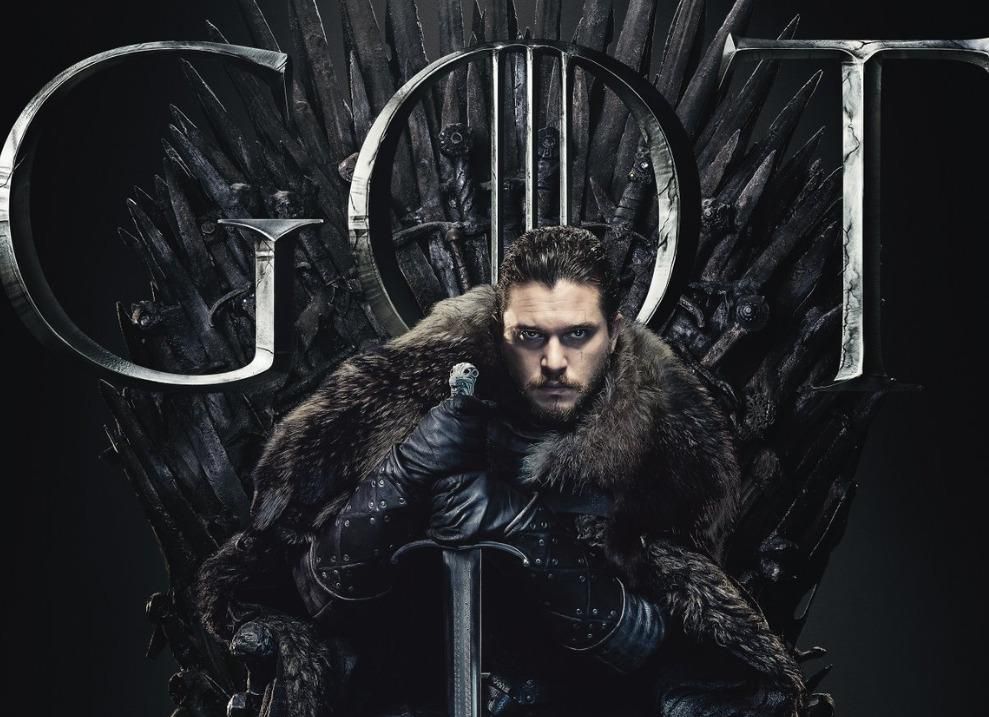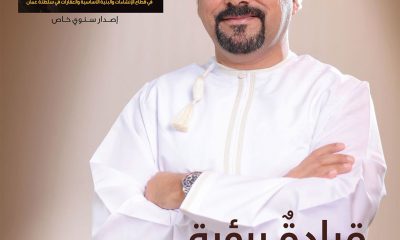Entertainment
How to Value Wealth in ‘Game of Thrones’

How do you put a price on a dragon? That’s the most vexing question facing anyone who wants to assess the dynastic fortunes that drive the plot of Game of Thrones, the epic TV series returning to HBO on April 14. Yes, it’s a fantasy saga that mixes medieval knights and castles with sorcery, zombies, and dragons.
But at its core, Game of Thrones is a contest involving nine very wealthy families—and Bloomberg News knows how to measure the holdings of real-world billionaires. So we set out to rank the wealthiest of Westeros, comparing their fortunes at the beginning of the series and where they stand before the eighth and final season.
There’s no shortage of material. Five novels by George R.R. Martin have been expanded into more than 60 hours of television drama that’s gone significantly beyond—and, in some cases, departed from—the books. Using this information to track the wealth of the ruling houses from the start of the series to the final episodes is more difficult than using wills, corporate earnings, or trusts to unmask billionaires.
“The books go into a lot of details about the economics of each family,” only some of which show up in the show, says Adam Whitehead, a fantasy critic who has written about the economics of Martin’s world and received public accolades from the author.
Ultimately, experts on Game of Thrones and finance who agreed to help us measure the relative assets of the Starks, Lannisters, and the other noble houses brought the puzzle back to the question of what a dragon is worth.
Three dragon eggs reverse the fortune of the penniless heir presumptive of the once-ruling House Targaryen. In the fantasy world of Game of Thrones, dragons are thought to have existed in not-too-distant history before going extinct in recent generations. Daenerys Targaryen’s dragons prove essential once they’ve matured, becoming a source of almost incomparable power.
There are methods that can help put a value on a dragon. Comparing the winged beasts to a fighting force of humans is one way to approximate their worth, says Michael Whitmire, chief executive officer of cloud-based accounting company FloQast. He created financial statements for House Lannister and published his results online.
“How many people would it be required for you to choose the group of people instead of the dragon?” Whitmire asks. There are few battles in the show that pit dragons directly against human soldiers. When they do fight, dragons almost always smoke the competition. Literally.
“If you have dragons, you would have most of the economic benefit in the world”
At one point, a transaction between Daenerys and moneyed merchants comes close to establishing a market price. She agrees to exchange one of her then-baby dragons for 8,000 enslaved troops and roughly 5,000 trainees, although it quickly becomes clear that the exchange, and the price that goes with it, is a ruse. Instead, Daenerys commands her dragon to burn the merchants and then frees the slaves.
For such difficult-to-sell assets as dragons, with no comparables on the market, financial experts would likely scrutinize them in one of two ways, says Steve Schuetz, a managing director for Valuation Research Corporation and Game of Thrones enthusiast. One is by evaluating the cost of dragon ownership. What’s the value of the time and money that it would cost to acquire an egg, incubate it, and then raise and train a baby dragon? Adjust that estimate for any dragons that don’t hatch or cannot be taught—or, in the case of the show, are captured by a zombie warlord.
Another method, the income approach, would estimate the potential plunder a dragon could generate on its owner’s behalf, or the potential destruction it could defend against, adjusted for its remaining useful life.
When rivals discover the existence of House Targaryen’s dragons, it triggers an arms race that adds a further wrinkle. House Lannister, the other clear candidate for wealthiest, develops a weapon that can harm a dragon, but it’s inaccurate and easily destroyed. Schuetz says emerging threats can help determine how much of a risk factor—and how much of a discount—should apply to the dragon’s value.
The Lannisters have access to capital the other noble families don’t. Their ancestral home is famed for its gold mines, a source of capital creation that’s easier to benchmark. “The Lannisters just control more territory. They’ve got more cities, they’ve got more lands under their control in the wealthier and more populated part of Westeros,” Whitehead says.
And that’s before you consider House Lannister’s strength in global trade and capital markets. “Whoever can control trade with the Free Cities can become quite wealthy,” says Whitehead. In the show, the dominant Iron Bank of Braavos is located offshore. Whitehead compares the fictional bank to the Medicis in 15th century Europe—both financiers wield more power than kings. “That’s why I think they’ve got the edge, going into the final season.”
So which is it: the bankers or the dragons?
To determine which family comes out ahead in wealth, we conveniently ignored the existential threat the zombie-like White Walkers pose to life on the continent. The rankings below rely heavily on Whitehead’s work, although Bloomberg sided with other experts who argued that dragons trump all other holdings. There’s nothing stopping Daenerys from using her dragons to make a very compelling case that the Iron Bankers should give her all the gold she wants, at very favorable rates.
“If you have dragons, you would have most of the economic benefit in the world at that moment in time,” Schuetz points out. “You have an ability to not only protect yourself but to be aggressive and take anything you want.”
Anyone who plays the game of wealth would probably choose to own the dragons.
House Targaryen
 Current Rank: 1
Current Rank: 1
Starting Rank: 9
At the beginning of the saga, this former ruling family of Westeros is homeless, subject to repeated assassination attempts, and in possession of little more than a famous name—and three dragon eggs. The eggs are thought to be worthless curios. Then the poorest of the major Game of Thrones families sees its fortunes dramatically change.
In addition to the dragons, the most valuable assets in the world, Daenerys Targaryen enters the concluding chapter of the story in control of House Lannister’s Casterly Rock and the cities of Slaver’s Bay. She has a large fighting force. While not necessarily relevant to our final valuation, Daenerys also controls the island fortress of Dragonstone, which sits atop a potentially valuable commodity: dragonglass.
House Lannister
 Current Rank: 2
Current Rank: 2
Starting Rank: 1
The family’s slogan about debt repayment owes at least part of its origin to the substantial gold reserves at Casterly Rock, although by Season 8 it’s been revealed that the Lannister mines haven’t been producing gold in years. Still, the family’s vast wealth can be quantified by the 3 million gold dragons in loans made to King Robert Baratheon, as well as what appear to be the best-equipped armies and ready access to commerce with the free cities such as Braavos. It’s clear that the Lannisters start out on top of the pack.
Access to the global financial system helps keep the Lannisters in control of the Iron Throne. Cersei makes good on promises to pay back debt owed to the Iron Bank, depicted as far and away the most powerful financial institution, and uses a new loan to hire a 20,000-strong mercenary army. The Game of Thrones section of Fandom.com disputes this figure, which Cersei provides at the end of Season 7. Should the poverty of King’s Landing, from which the Lannisters rule, be counted against the family’s wealth? The shortage of food and supplies must be weighed against control of a significant port and commercial hub which, together with access to borrowed capital, can open up trade and imports from relatively fertile lands elsewhere.
House Arryn
 Current Rank: 3
Current Rank: 3
Starting Rank: 3
The mountainous natural defenses of the Vale region are a key asset for its ruling family, freeing up common people to farm and pursue other commercial activities without the ravages of the continent-wide warfare.
The Eyrie, home of the Arryns, is thought of as impregnable for anyone without a dragon. The Vale is also home to Gulltown, the closest major port to the free city of Braavos.
The mounted Knights of the Vale are worth far more than the average foot soldier. It’s unclear, though, exactly how many knights House Arryn can supply at full mobilization. We see that these forces are large enough to turn the tide of a battle for Winterfell and are relatively fresh at the end of Season 7, having sat out prior battles.
House Stark
 Current Rank: 4
Current Rank: 4
Starting Rank: 4
The Starks and their vassal houses may control more land than anyone, but it’s sparsely populated and difficult to traverse. Natural resources such as timber, iron, and silver speak to the opportunity for development, but limited manpower and the coming winter are poised to curtail any such efforts. Like Siberia, the North is as difficult a region to fight as it is to develop.
This resource wealth allows them to edge House Greyjoys at the end of Season 7, despite the discount winter puts on the value of their land. The Starks still have access to trees, game, and other natural resources, despite a depleted and war-weary fighting force.
House Greyjoy
 Current Rank: 5
Current Rank: 5
Starting Rank: 7
The Greyjoys have few resources at their disposal, and their raiding culture makes prospects for economic advancement unlikely at the start of the series. A lack of rich forests makes building ships difficult.
By the end, the Greyjoy financial picture has clearly improved, but the details are fuzzy. Euron Greyjoy’s pledge to build 1,000 ships at the end of Season 6 is clearly hyperbole, according to military experts. Still, boats are valuable, particularly when used for such things as trading rather than raiding, and the growth of this fleet indicates a rise in the ruling family’s fortune.
House Martell
 Current Rank: 6
Current Rank: 6
Starting Rank: 6
The sandy region of Dorne is limited in population and in arable land. Exports include wine and grapes.
House Martell does have a fighting force and some ships, although the story provides few details about their number.
Though most of the main characters in this house are dead by the end of Season 7, it likely still exists in some form; Oberyn says in Season 4 that he has eight daughters. Meanwhile, Dorne’s isolated locale would have insulated it from excessive material damage.
House Tully
 Current Rank: 7
Current Rank: 7
Starting Rank: 5
The Tully seat should be a wealthy one, judging by its fertile land and central location. Unfortunately, this location also means that it’s regularly torn up by every war that comes its way, and thus less likely to produce income. Volatile vassals such as Walder Frey, a noble who controls a lucrative crossing over a key trade route, likely translates into lower tax revenue even at the start of the show, leaving the Tullys with more than their fair share of headaches.
The top surviving Tully becomes a prisoner of the Freys and eventually orders his troops to surrender. It’s not clear what, if any, significant wealth remains by the time we reach the final season of the show.
House Baratheon
 Current Rank: 8
Current Rank: 8
Starting Rank: 8
One would think that the ruler seated atop the Iron Throne would also lead one of the richest families in Westeros, but King Robert Baratheon is the exception. He starts the series more than 6 million gold dragons in debt, owing 3 million to House Lannister alone.
By the end of Season 7, brothers Robert, Stannis, and Renly Baratheon are dead, although Robert’s illegitimate son Gendry appears to be on the up-and-up as a fleet-footed member of Jon Snow’s retinue. Survival is more than House Tyrell can claim.
House Tyrell
 Current Rank: 9
Current Rank: 9
Starting Rank: 2
At the start of the series, the Tyrells were giving the Lannisters a run for their money as the richest house in Westeros. The pivotal assets were a vast amount of fertile land and a large population that paid taxes.
House Tyrell had the ability to raise a large army—backing Renly Baratheon in Season 2 created a unified force of 100,000 men—but this military capacity was regarded as far inferior to the Lannisters’ battalions.
The continuation of House Tyrell went from grim (after the death of heirs Margaery and Loras) to doubtful. Lady Olenna, the de facto head of the family, poisons herself after the Lannisters seize Highgarden. This formerly wealthy family may be wiped out.
-

 News2 months ago
News2 months agoOpenAI Strengthens ChatGPT’s Mental Health Safeguards Ahead of GPT-5 Launch
-

 OER Magazines4 weeks ago
OER Magazines4 weeks agoDossier – ToP 25 Personalities 2025
-

 Banking & Finance2 months ago
Banking & Finance2 months agoStrong Performance and Strategic Approach: ahlibank announces Its Financial Results for the First Half of 2025
-

 Dossier4 weeks ago
Dossier4 weeks agoArabic Dossier – ToP 25 Personalities 2025
-

 Economy2 months ago
Economy2 months agoNajla Zuhair Al Jamali Appointed President of bp Oman
-

 News1 month ago
News1 month agoOoredoo Wins Silver Stevie® Award for Diversity and Inclusion Excellence
-

 News1 month ago
News1 month agoxAI Open-Sources Grok 2.5, Signaling Accelerated AI Push
-

 Leaders Speak2 months ago
Leaders Speak2 months agoVIDEO: Robert MacLean on how NHI is Shaping Oman’s Next Generation of Hospitality Leaders





























You must be logged in to post a comment Login